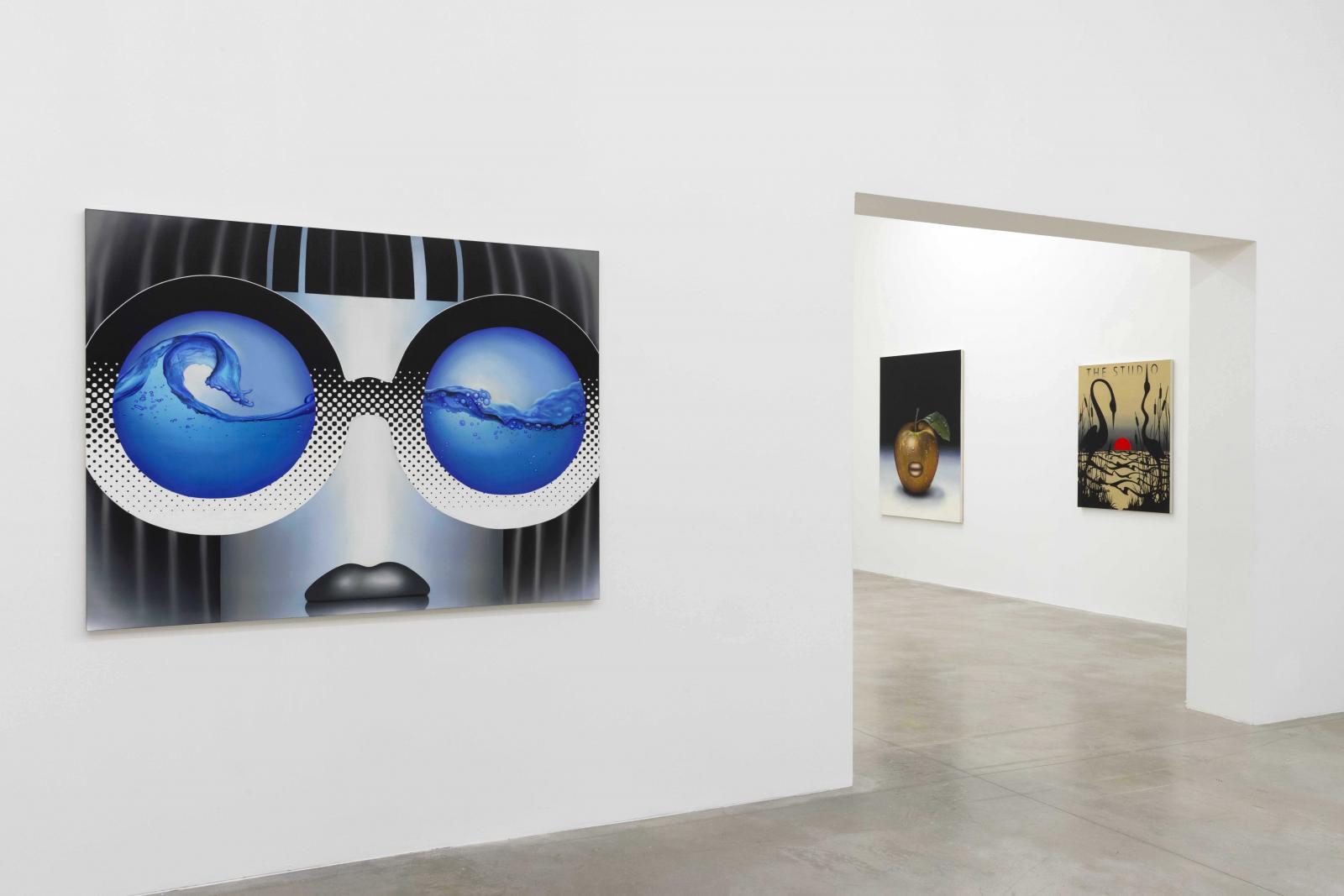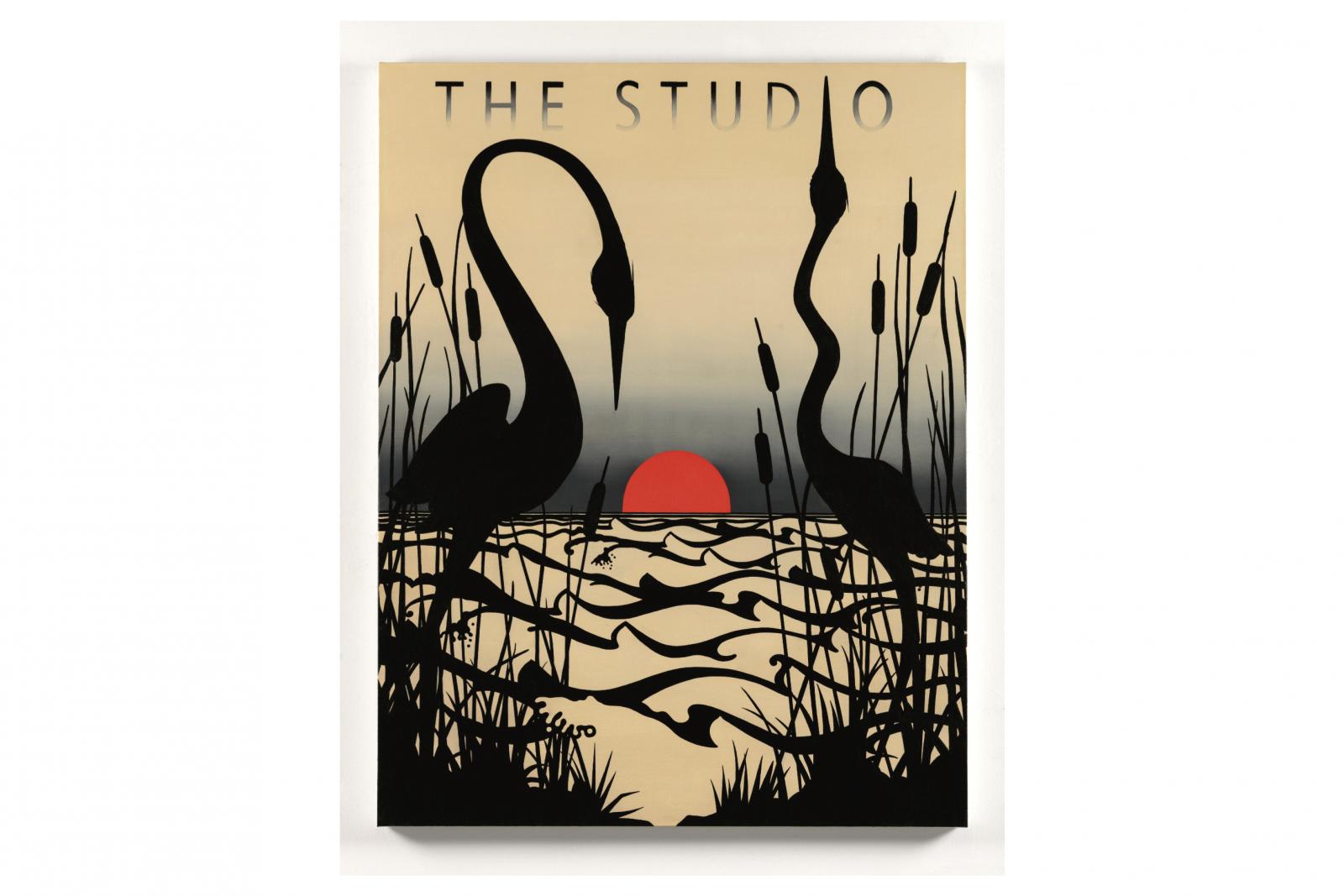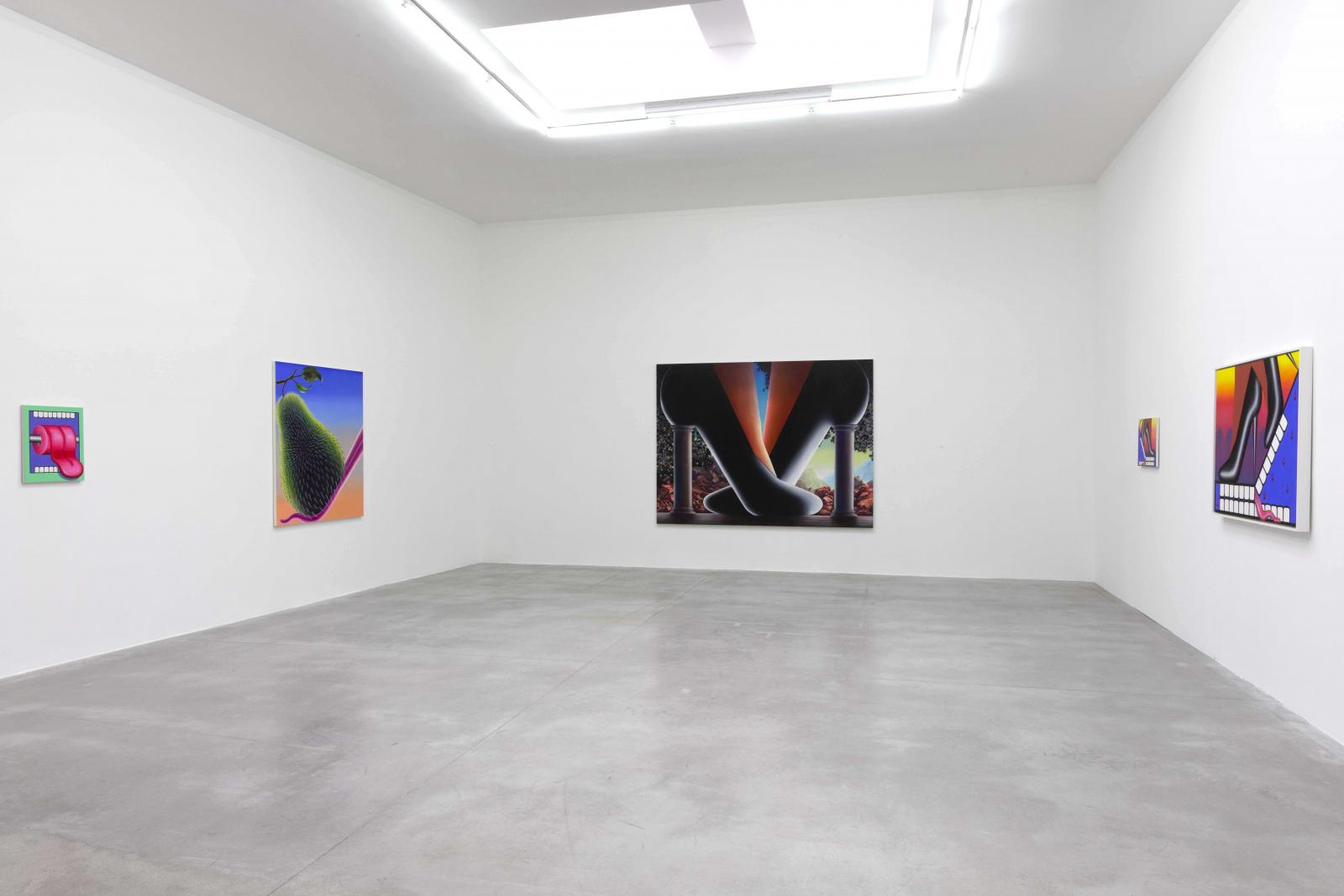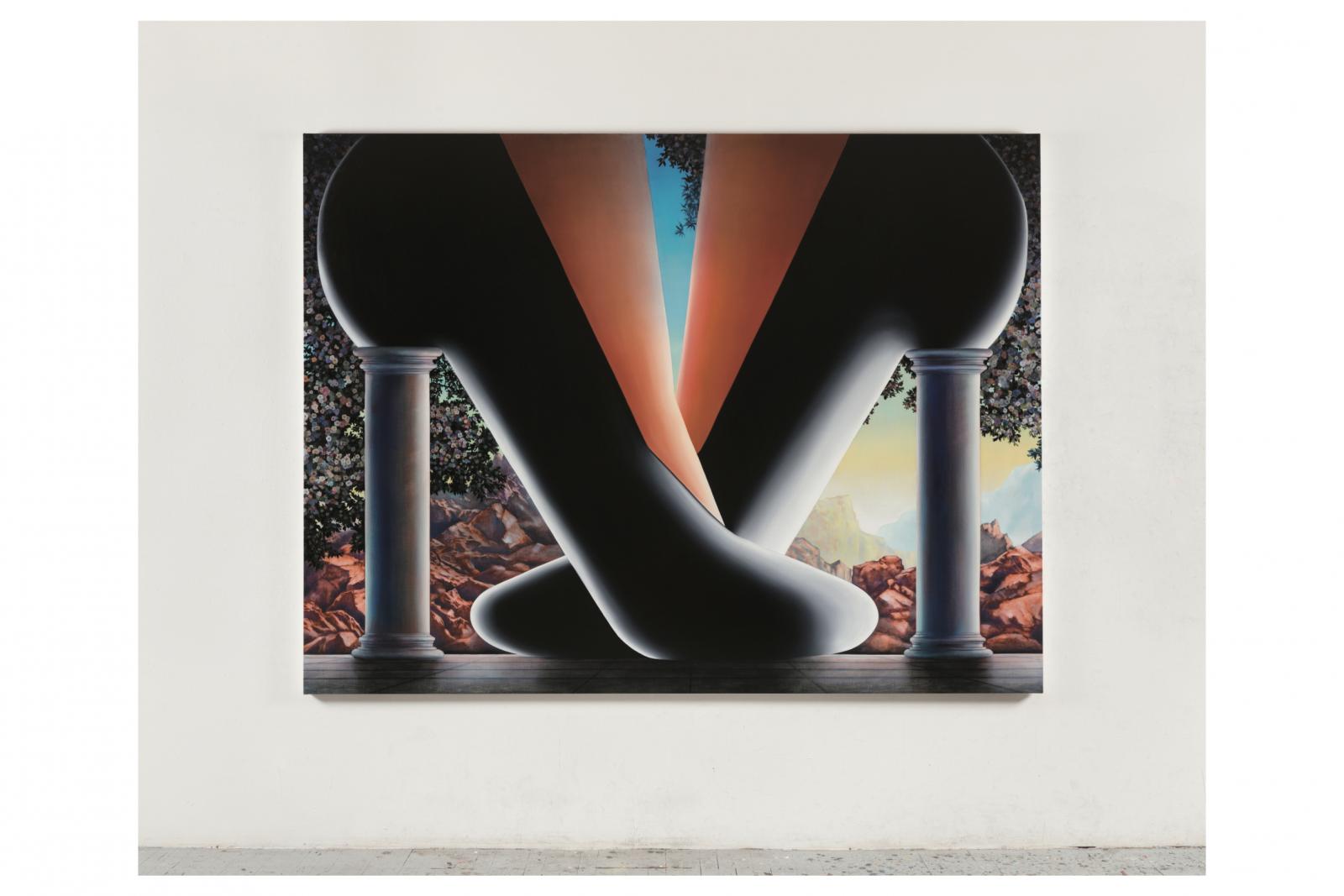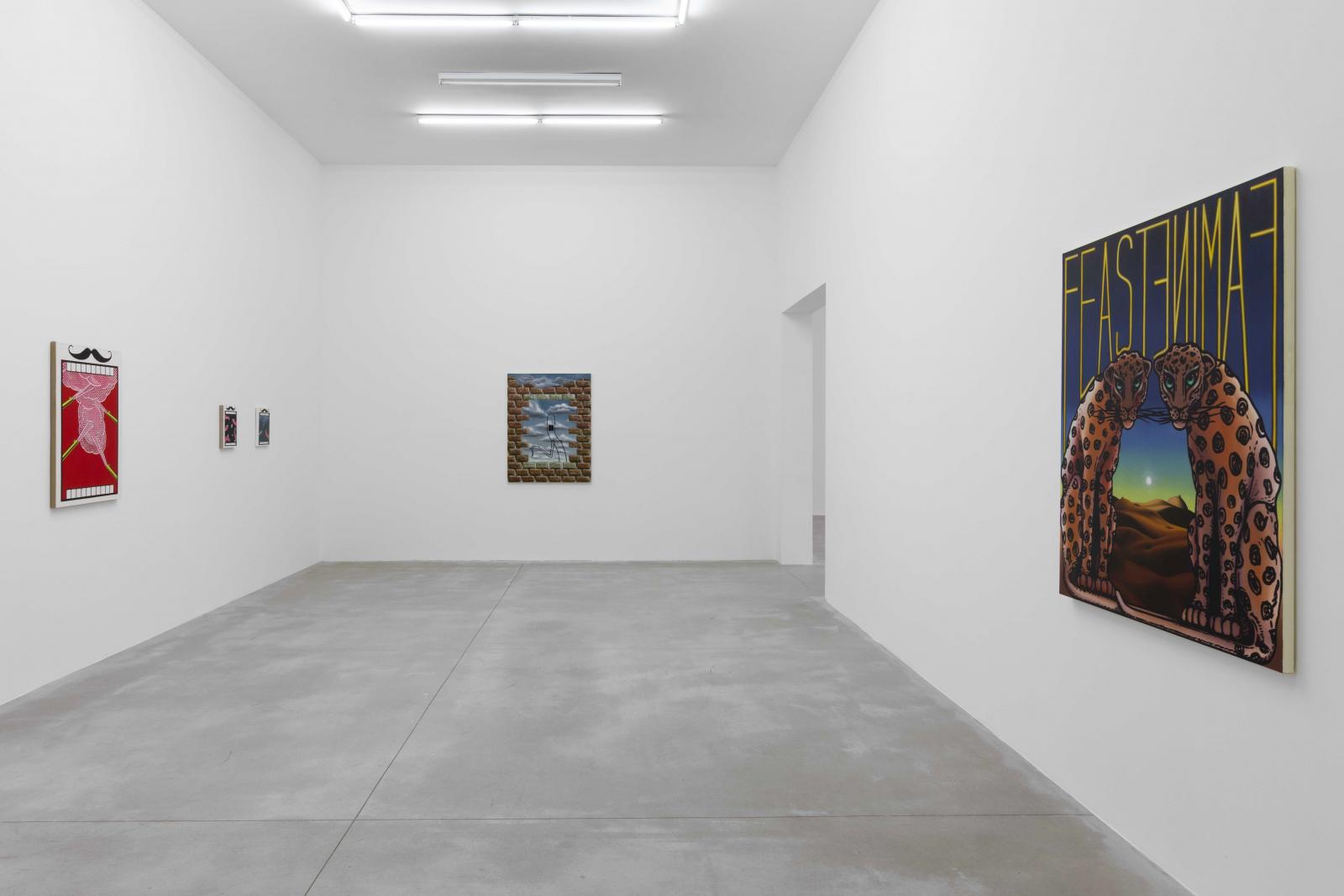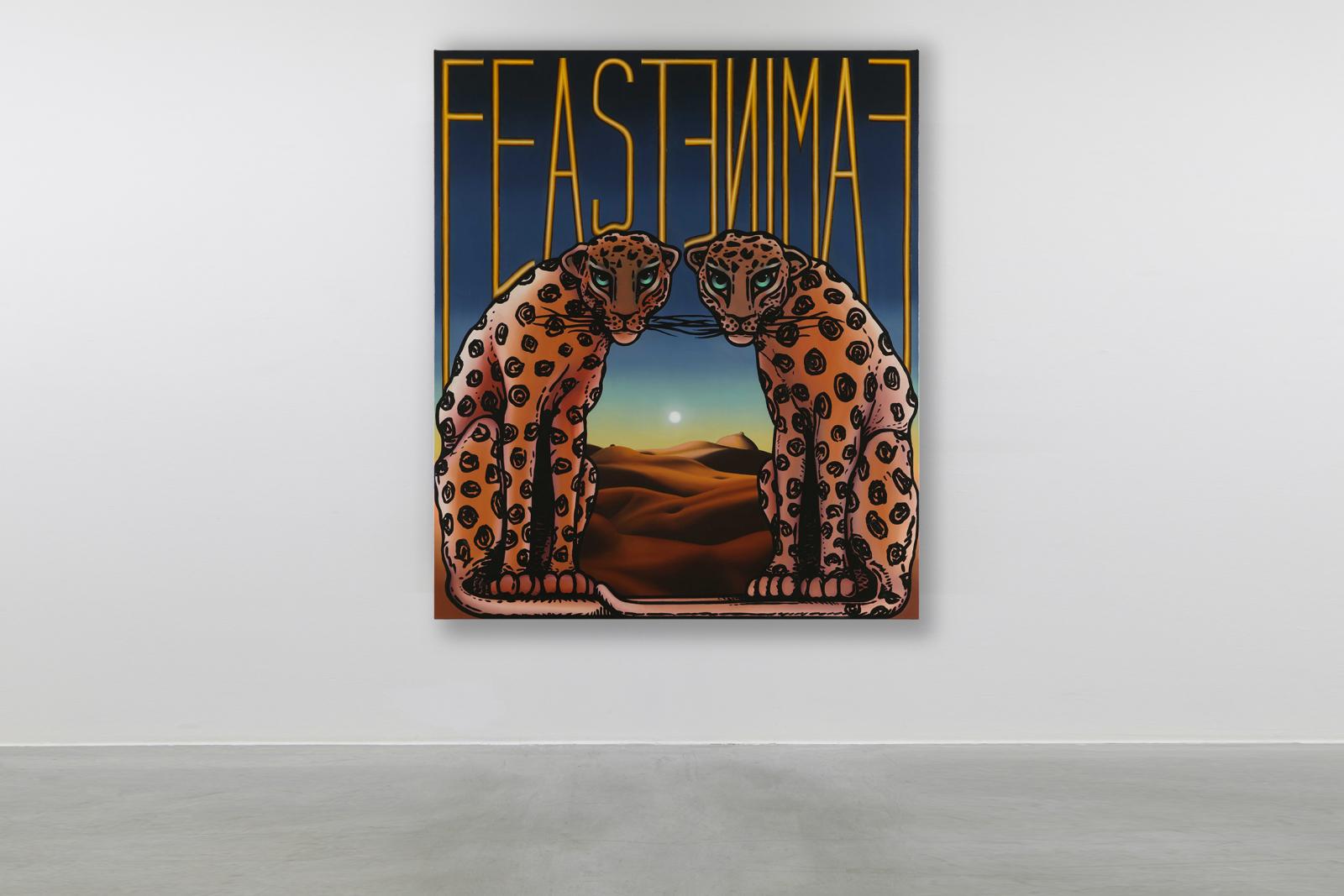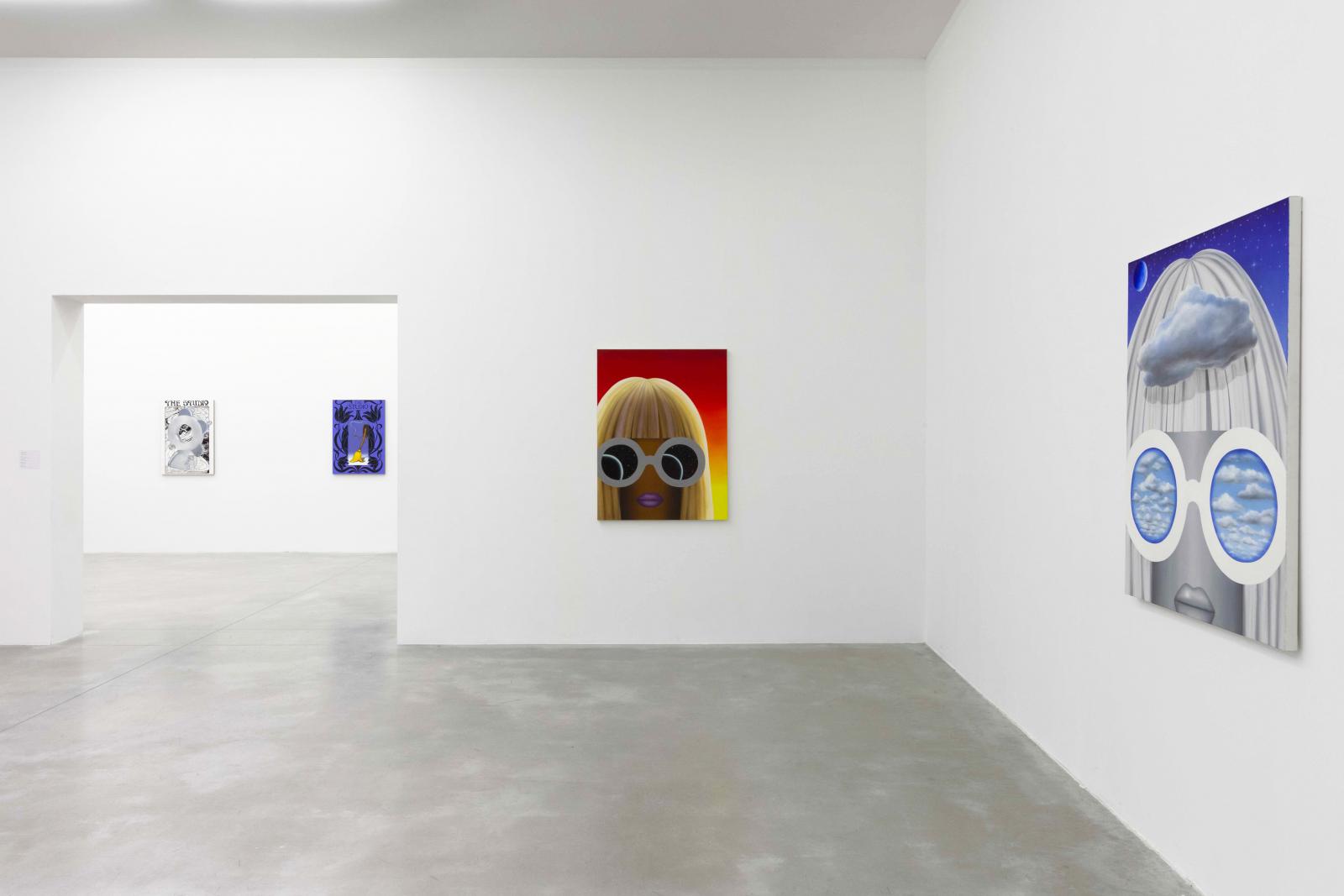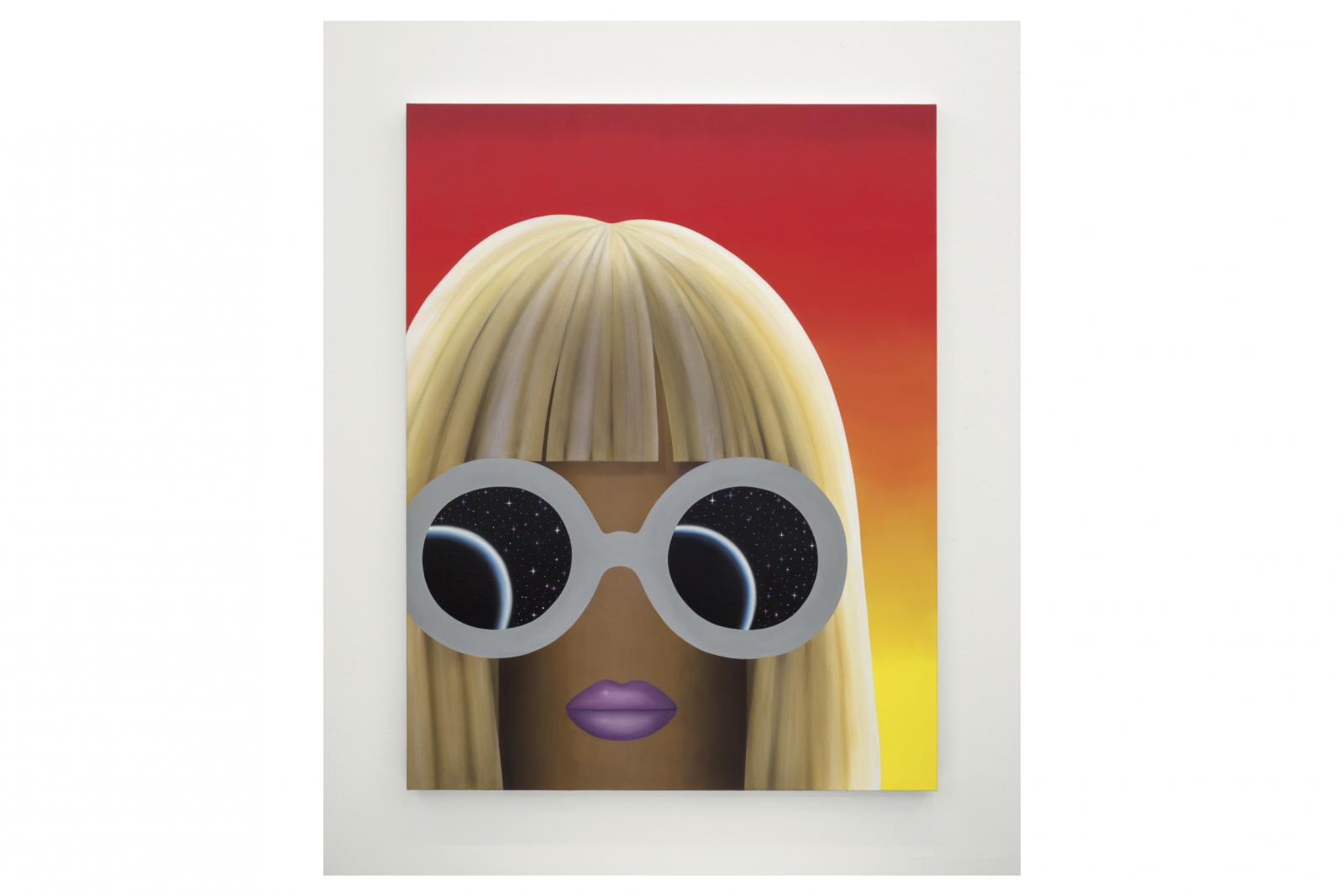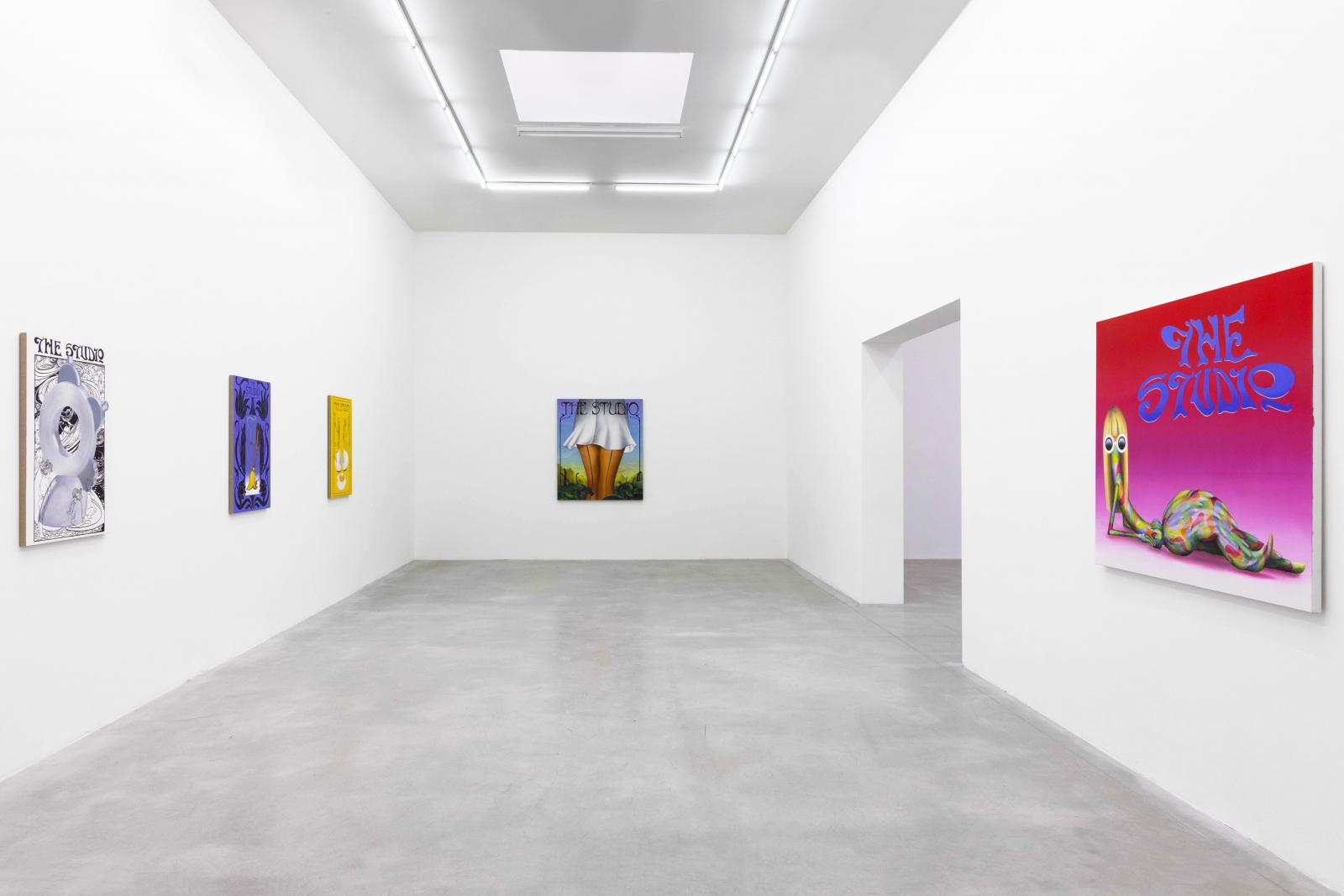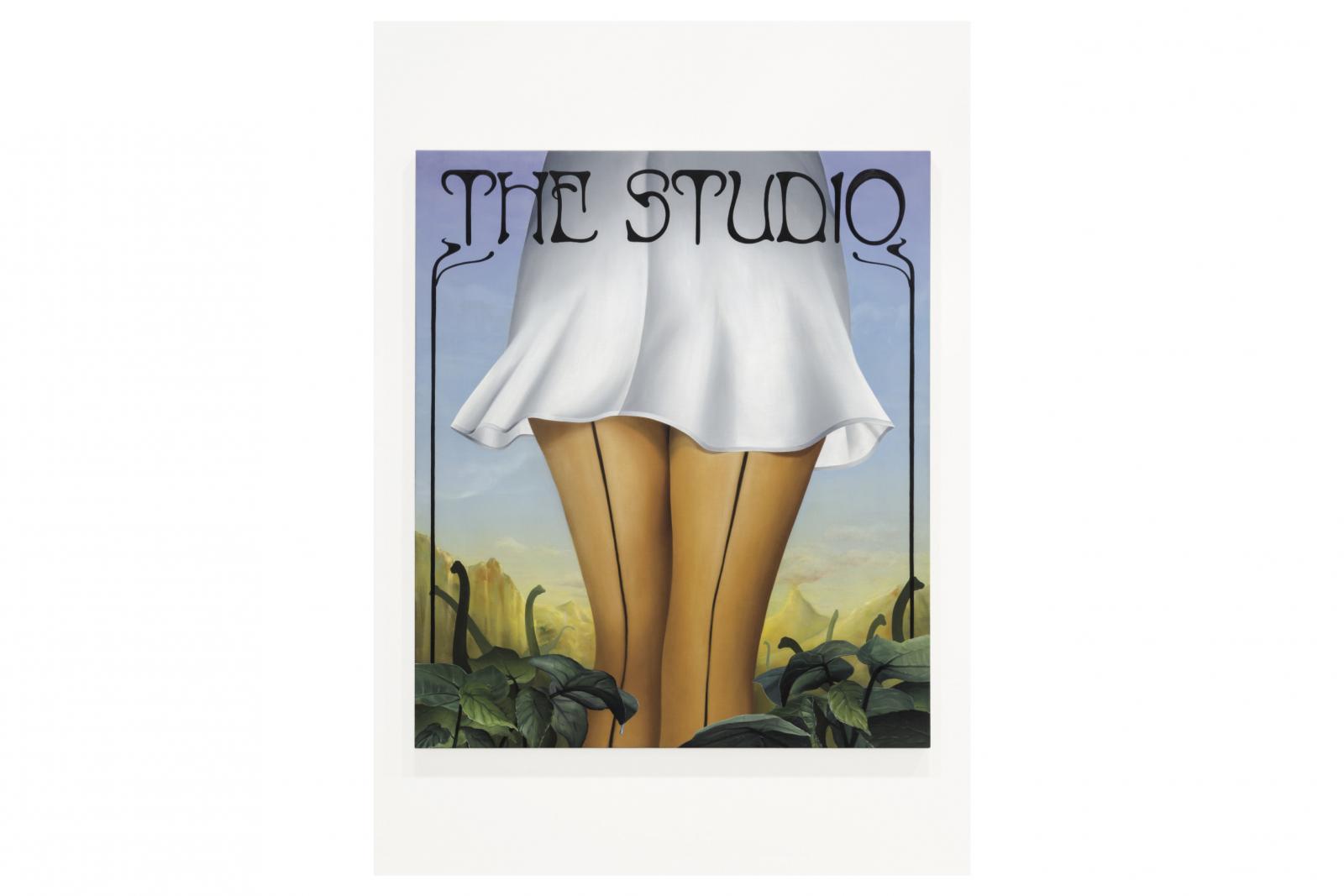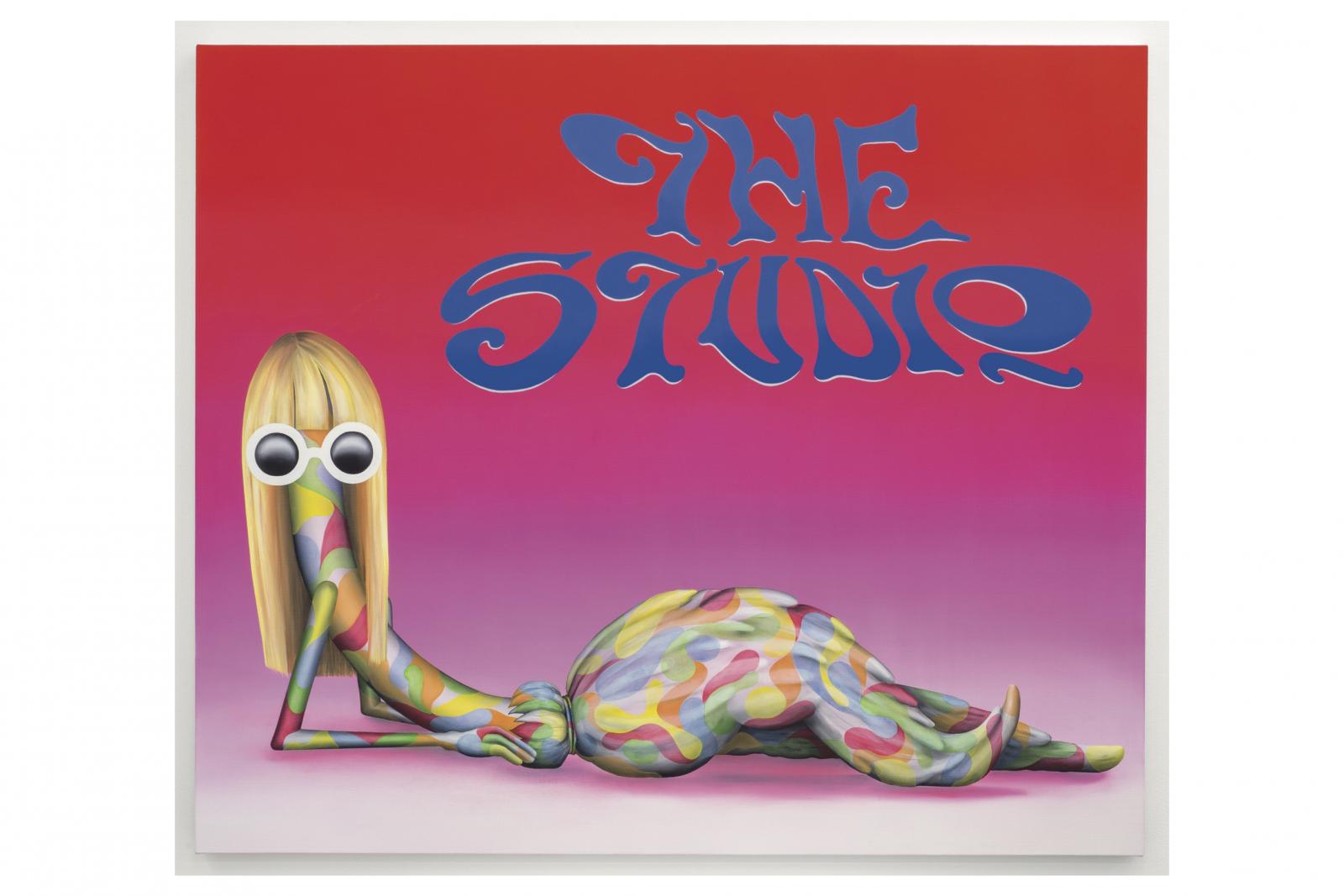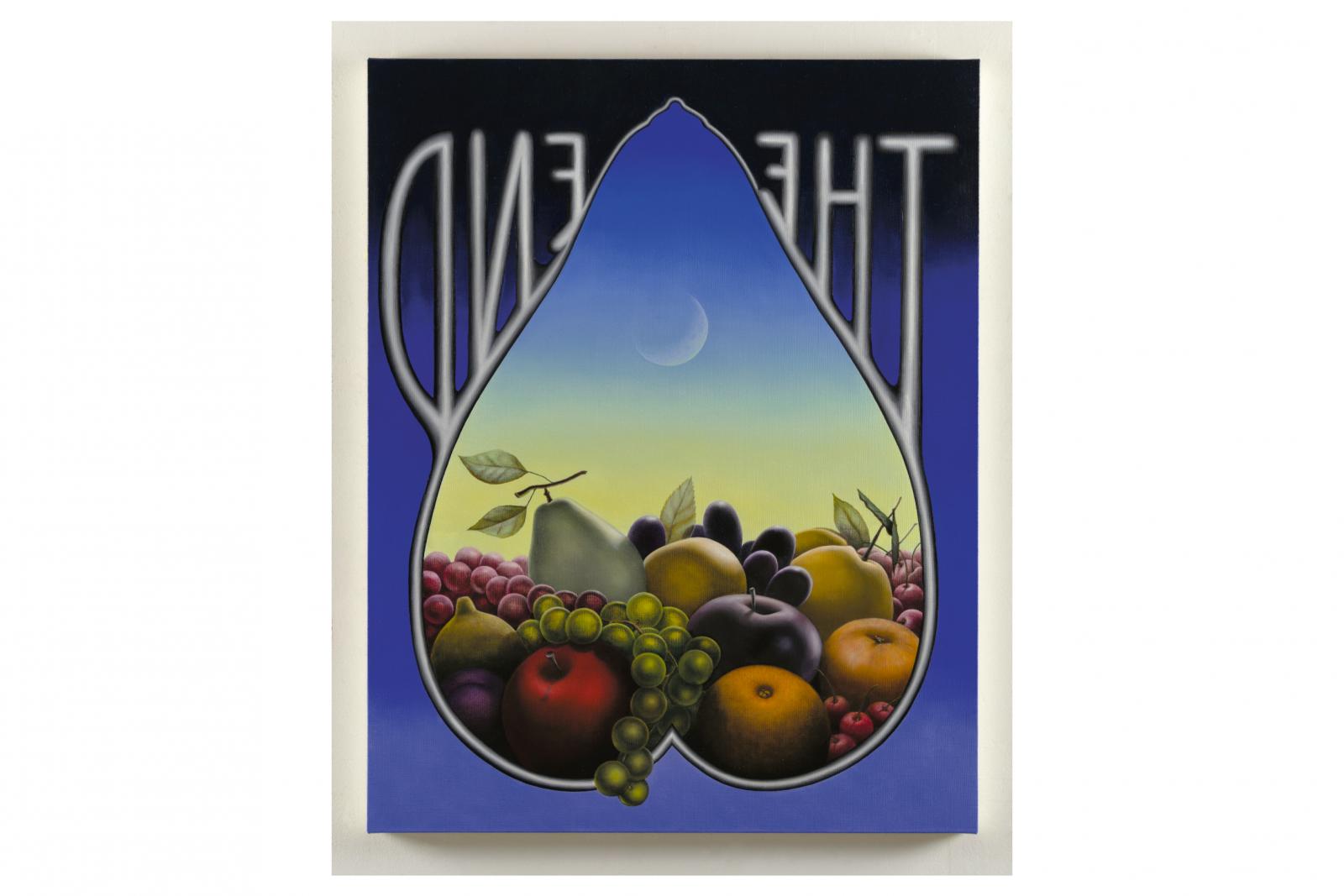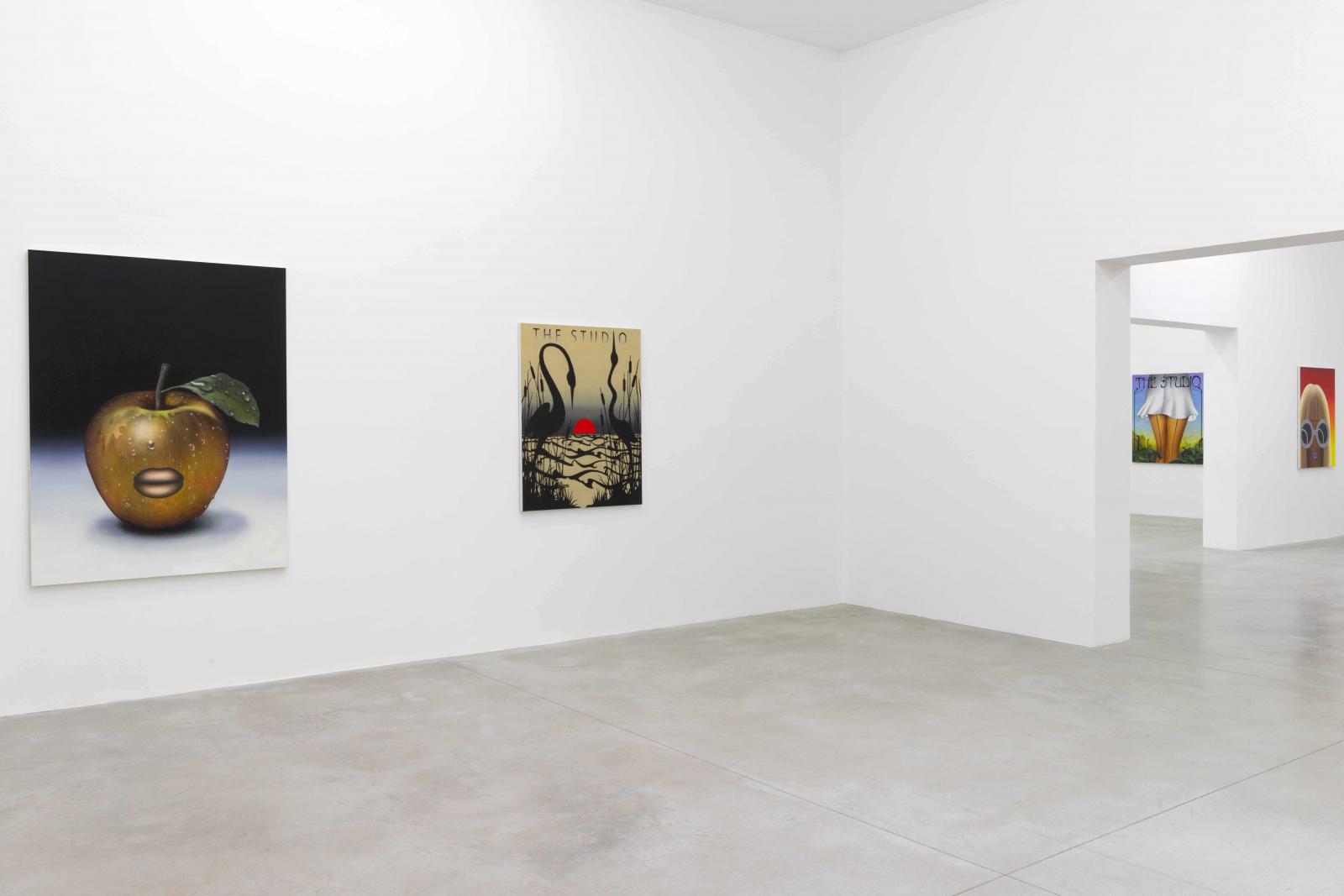Emily Mae Smith
Emily Mae Smith
Thank you: Mary Mary, Glasgow; Simone Subal, New York; Contemporary Fine Arts, Berlin.
The Consortium Museum presents the first ever institutional exhibition devoted to Emily Mae Smith. It brings together about forty artworks made between 2014 and 2018 and gathered from international private collections.
An encounter with Emily Mae Smith’s oeuvre reminds us that great artists don’t go with the flow, don’t show us what we have already seen, that they are not here to comfort us. Her works’ references, most particularly within the history of painting and, generally speaking, in the history of images, are not those we are ready to be confronted with, their way of building a future for these sources of inspiration is not what we would expect. They impose pictorial universes for which we are unprepared; they catch us by surprise by moving the debate someplace else entirely, to a place where we’re not yet, where it will be novel to go. For this they need a lot of courage, patience, and also perseverance, to oppose common taste in an era of smooth, facile careers.
Emily Mae Smith was born in 1979 in Austin, Texas. She evidently hasn’t chosen a made-to-order aesthetic language that would satisfy the conformism of the art market and the mainstream taste stemming from herd mentality. In 2004, she came to New York to study at Columbia (which she evokes today with those words “aggression in the guise of care,” quoting art critic Dave Hickey’s description of art school teaching) but also to give her ambition a chance. “I was ready to get out of Austin. Though it was culturally rich in many ways, it lacked an art world big enough to include and support me. I was very ambitious and knew that I needed to go to the ‘mecca.’ In my eyes New York was the center of contemporary art.”
After graduating in 2006, she found herself confronted with the 2007 recession, consecutive to the sub-prime mortgage crisis and the heavy blow it inflicted on all industries. The art industry wasn’t spared, and from then on got into the habit of finding refuge in the mainstream. “At that time there were not many young and small galleries in New York, even though there was a market bubble forming for young art/young artists. I was suspicious of that. People’s careers would kind of just skyrocket. The system didn’t support a slow build. I watched a lot of my peers get a lot of opportunities while I kind of hung back and struggled. I could feel that it wasn’t my time yet and that I was supposed to wait for something different. I wanted to make great art and be a great artist–it’s the long haul. I didn’t know enough about what I wanted out of my artwork, I didn’t want to get committed. I was after something that a scene didn’t exist for.”
For Emily Mae Smith’s painting, which before anything else doesn’t hide its borrowings from the 1960s Chicago Imagists, with its vibrant colors, energetic draftsmanship, uninhibited Surrealist influences, a sense of the grotesque, flawless execution and boundless whimsy, there is indeed no current art scene to cling to. Among other artists from the Chicago Imagists scene, Emily Mae Smith quotes Christina Ramberg and Barbara Rossi; in fact traces from one and the other can easily be found in Smith’s work with feminine figures from the former and a color palette from the latter. Evidently, she furthers all of this by injecting into her paintings as much Pop Art as Surrealism, with on occasion a pinch of Art Nouveau that sits very awkwardly with contemporary art.
The Studio series borrows its title and parts of its formal elements from the famed British magazine founded in 1893 and published until 1964, which established a link between Art Nouveau, Arts and Crafts, and Modernism. The paintings from this series also borrow compositional elements from the periodical, with the typeface from its title becoming part of the picture to totally discombobulate it by mimicking a magazine cover. Within the constraints of this self-imposed format, and even when she doesn’t use them, Smith unrolls a visual vocabulary made of stilettos, teeth, candles, eyeglasses, and a whole bunch of unexpected artifacts articulating little, esoteric fairy tales where the question of gender always lies beneath the surface. Dizzyingly high stilettos echo dizzyingly large mustaches, which in the composition are integrated within a frame painted on the canvas, as if it predicated a mock masculinity. Are her candles with their round eyeglasses winking at the candles painted by Richter? Are her flamingoes chatting with the herons painted by Polke in 1968? Most certainly her painting is intent on re-establishing all kind of dialogues and knows how to choose its partners in conversation––Smith herself quotes Ingres (“His figures and flesh are not human”) and leaves the door open to everything else (“I’m game for anything in the history of visual culture.”)
Smith doesn’t say this, but in the 1960s the Chicago Imagists art scene would distinguish itself with its total–and reciprocal–lack of interest in the New York art scene. For a certain amount of time Smith herself met with a slightly similar fate and transformed this episode from her life into the occasion for an encounter with a recurrent visual trope in her paintings: a broom. During the time when she met with very limited success, Smith worked a succession of odd jobs, sparing no efforts in the process. She worked in a variety of places, including at art galleries. “It started with my laboring in the art world, doing random jobs to get by while making my work. I thought, ‘I feel like that broom in The Sorcerer’s Apprentice.’ And then the ideas took off from there.”
As a visual trope rather than as a subject, the broom seemed to offer all the hidden advantages underneath its incongruous presence. “It was a way for me to paint an object, figure, female and phallus at the same time. I thought it was funny and an ideal vehicle.” In the pantheon of objects to which she gives human form, Smith made this character into a female artist presenting herself as a phallus. It is often busy painting something (in that case it is fitted with more than two arms), scanning the horizon with a pair of bifocals to search for a subject. Or, as in the recent painting called The Riddle, holding a disproportionally large brush and conversing with a stone figure inside a grotto. Emily Mae Smith explains; “The broom-like figure, which has gone through a lot of permutations and changes, has the agency to move in painting and its histories because its image is bound up with our phallocentric myths of authenticity and creation.”
—Eric Troncy
